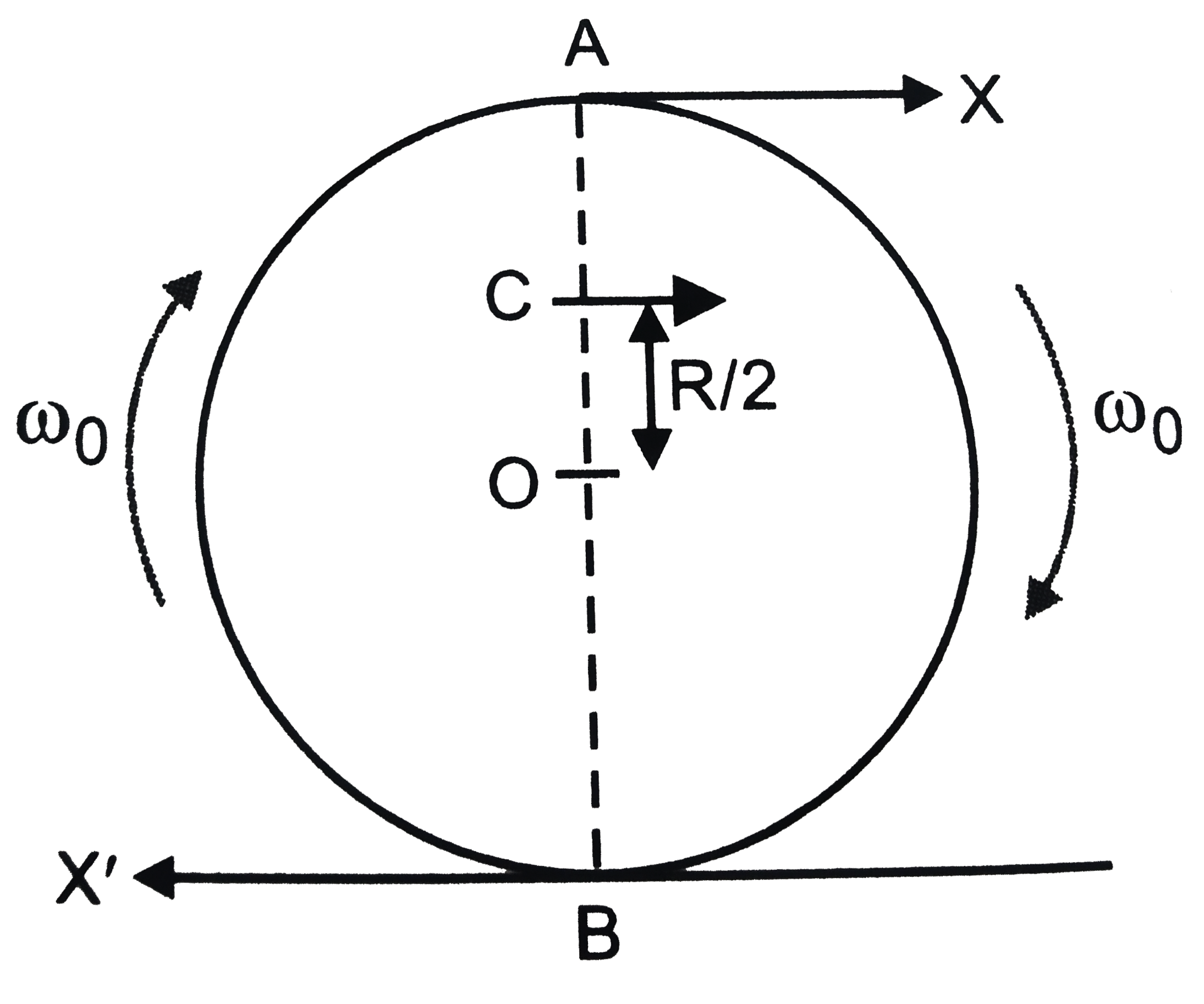
A disc of radius R is spun to an angualr speed ω0 about its axis and then imparted a horizontal velocity of magnitude ω0R4. The coefficient of friction is μ. The sense of rotation and direction of linear velocity are shown in the figure. The disc will return to its initial position.
if the value of μ<0.5
irrespective of the value of μ
if the value of 0.5<μ<1
if μ>1

About bottommost point
angular momentum
L=ICω0−mv0R (anticlockwise)
=12mR2ω−m(ω0R4)R

=14mR2ω0
=+ ve or anticlockwise
during slip friction acts about bottommost point. So, its torque is zero or angular momentum about bottommost point should also remain anticlockwise when pure rolling starts. so, figure should be as shown below.
so, the disc will return to its initial position for all value of μ.
Similar Questions
A disc rotating about its axis with angular speed ω0 is placed lightly (without any translational pull) on a perfectly frictionless table. The radius of the disc is R. What are the linear velocities of the points A,BandC on the disc shown in Fig. Will the disc roll in the direction indicated ?

View SolutionA disc of radius R is spun to an angular speed ω0 about its axis and then imparted a horizontal velocity of magnitude ω0R4 (at t=0) with its plane remaining vertical. The coefficient of friction between the disc and the plane is μ. The sense of rotation and direction of its linear speed are shown in the figure. The disc returns to its initial point in time T=256kμgω0R. Find the value of k.

View SolutionA disc rotating about its axis with angular speed omega_(0) is placed lightly (without any translational pull) on a perfectly frictionless table. The radius of the disc is R . What are the linear velocities of the points A, B and C on the disc shown in Fig. Will the disc roll in the direction indicated ?
View SolutionA circular disc rotates freely about a vertical axis through its centre with angular velocity ω1. A ring having the same mass and radius as the disc is placed on the disc and the system now rotates with an angular velocity ω2 about the same vertical axis. Then ω2/ω1 is:
View SolutionA disc rotating about its axis with angular speed omega_(0) is placed lightly (without any translational pull) on a perfectly frictionless table. The radius of the disc is R . What are the linear velocities of the points A, B and C on the disc shown in Fig. Will the disc roll in the direction indicated ?
View SolutionA disc is given an initial angular velocity ω0 and placed on horizontal surface as shown. The quantities which will not depend on the coefficient of friction is/are

View Solution
A disc of radius R is spun to an angualr speed ω0 about its axis and then imparted a horizontal velocity of magnitude ω0R4. The coefficient of friction is μ. The sense of rotation and direction of linear velocity are shown in the figure. The disc will return to its initial position.
View SolutionA disc is given an angular velocity omega_(0) and a linear velocity v_(0) as shown in the figure. It is released on a rough horizontal surface of friction coefficient mu. Mark the correct statement (omega_(0)=3v_(0)//R)
View Solution

